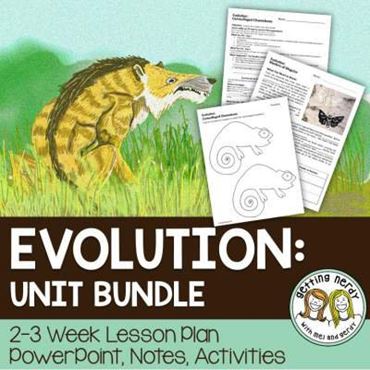
GN1015
Price: $63.98
You’re ready to teach with this comprehensive bundle on evolution. Engage your students with animated PowerPoints and 2–3 weeks of aligned lessons covering the following topics:
Unit bundle includes:
MS-LS4-1. Analyze and interpret data for patterns in the fossil record that document the existence, diversity, extinction, and change of life forms throughout the history of life on Earth under the assumption that natural laws operate today as in the past.
MS-LS4-2. Apply scientific ideas to construct an explanation for the anatomical similarities and differences among modern organisms and between modern and fossil organisms to infer evolutionary relationships.
MS-LS4-3. Analyze displays of pictorial data to compare patterns of similarities in the embryological development across multiple species to identify relationships not evident in the fully formed anatomy.
MS-LS4-4. Construct an explanation based on evidence that describes how genetic variations of traits in a population increase some individuals’ probability of surviving and reproducing in a specific environment.